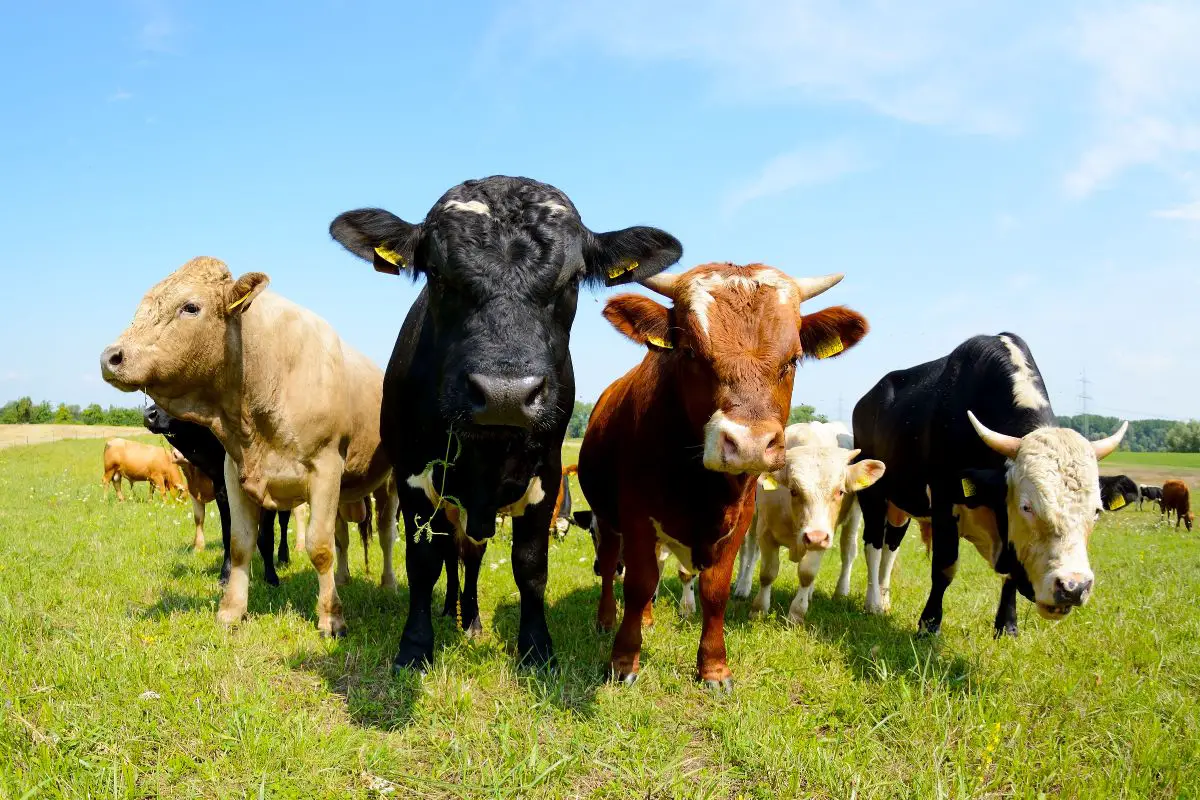
When you hear the word cow, you most likely picture the black and white animals you see grazing in fields throughout the country. These are the most popular domestic breed and are Holstein cows. Today, we are going to get to know these curious, gentle creatures and then explore animals that are similar to them and live throughout the world.
1. Meet The Domestic Cow
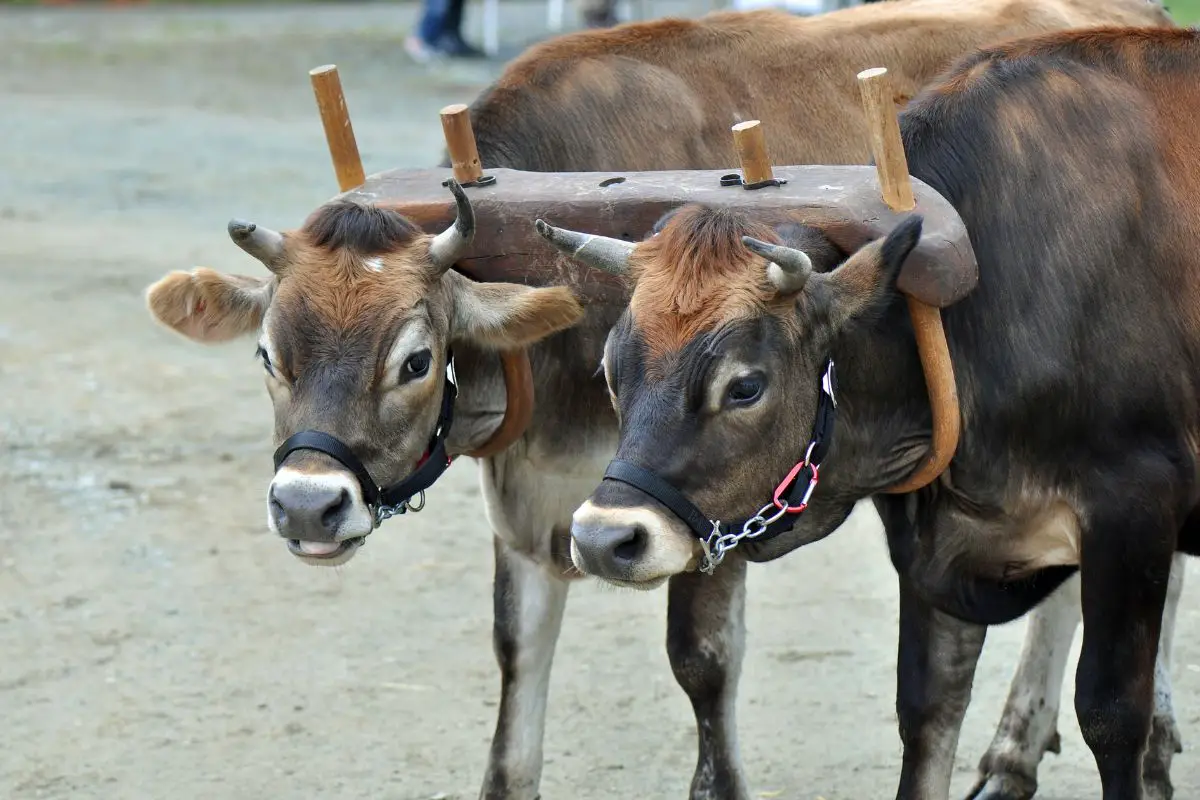
Cows are cloven-hoofed mammals. They have a four-part stomach and are often seen chewing cud. Cows all frow horns, although many of the domestic ones have their horns cut off.
They first came to this country on Columbus’ second voyage here in 1493. Originally, they were domesticated in Turkey and were actually domesticated after sheep, goats, pigs, and dogs. Cows are normally used for milk, meat, and making leather.
These gentle animals are extremely curious and very social. They form strong bonds with other members of their herd and have actually been seen crying. They communicate mainly through their mooing sound.
Each cow has a distinctive personality and it can run the same range as humans. They have a tendency to fear the unknown and don’t like change. Cows average about 1500 pounds and stand approximately 58″ tall.
They have long memories and can hold grudges against other cows and people who are mean to them. These animals are extremely intelligent and form a complex social order. They are grazers who eat mainly grass, hay, and grain.
2. Asian Water Buffalo
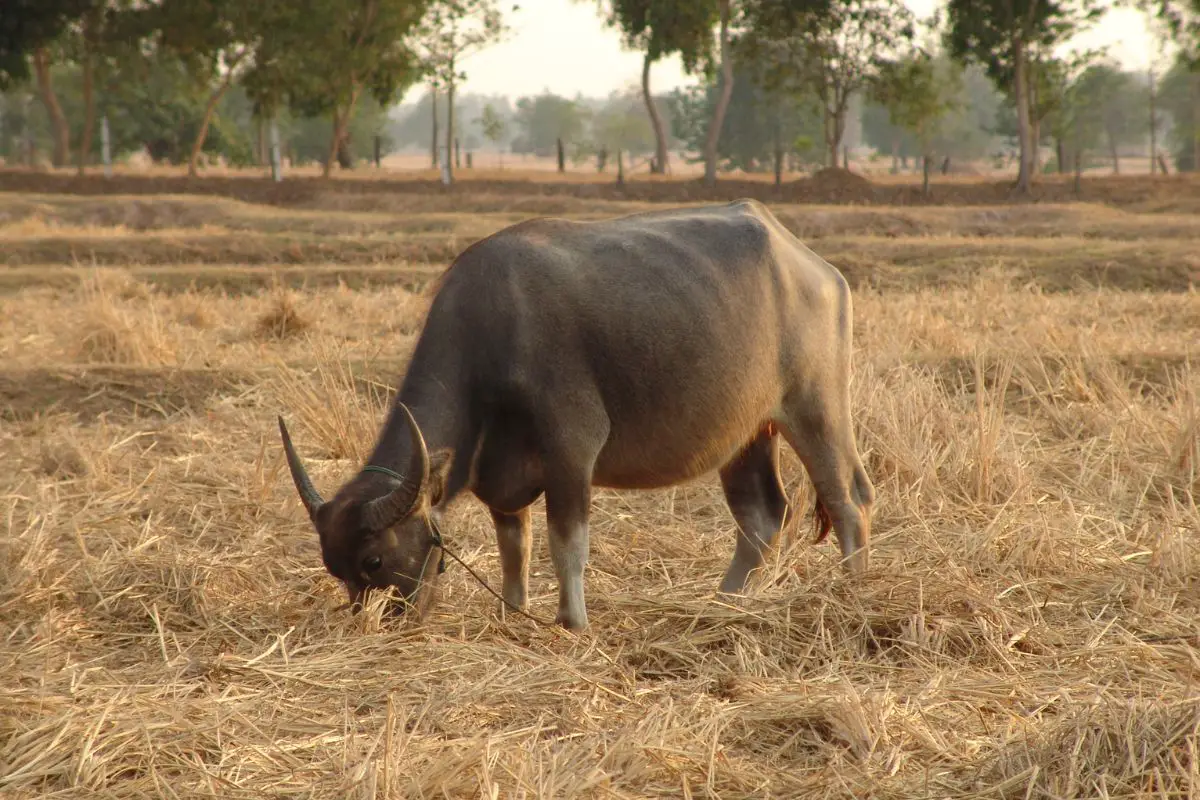
Asian water buffalo originated in India. Their milk is richer than that of the domestic cow and has a greater fat and protein content. They don’t produce a lot of milk, however, and are mainly used as work animals for tilling the rice fields.
Their skin is dark black and they sport horns that grow downward and then curve backward. The domestic members of this animal are gentle like cows but the wild members can be quite aggressive. When they run, they can reach speeds of up to 30 MPH.
They are smaller than cows. They average 47-52 inches in height and weigh anywhere from 660 to 1210 pounds. Unlike cows, they love water.
Their diets consist of aquatic plants, alfalfa, and banana leaves. They are normally herd animals but little is known about how they structure their system.
3. African Buffalo
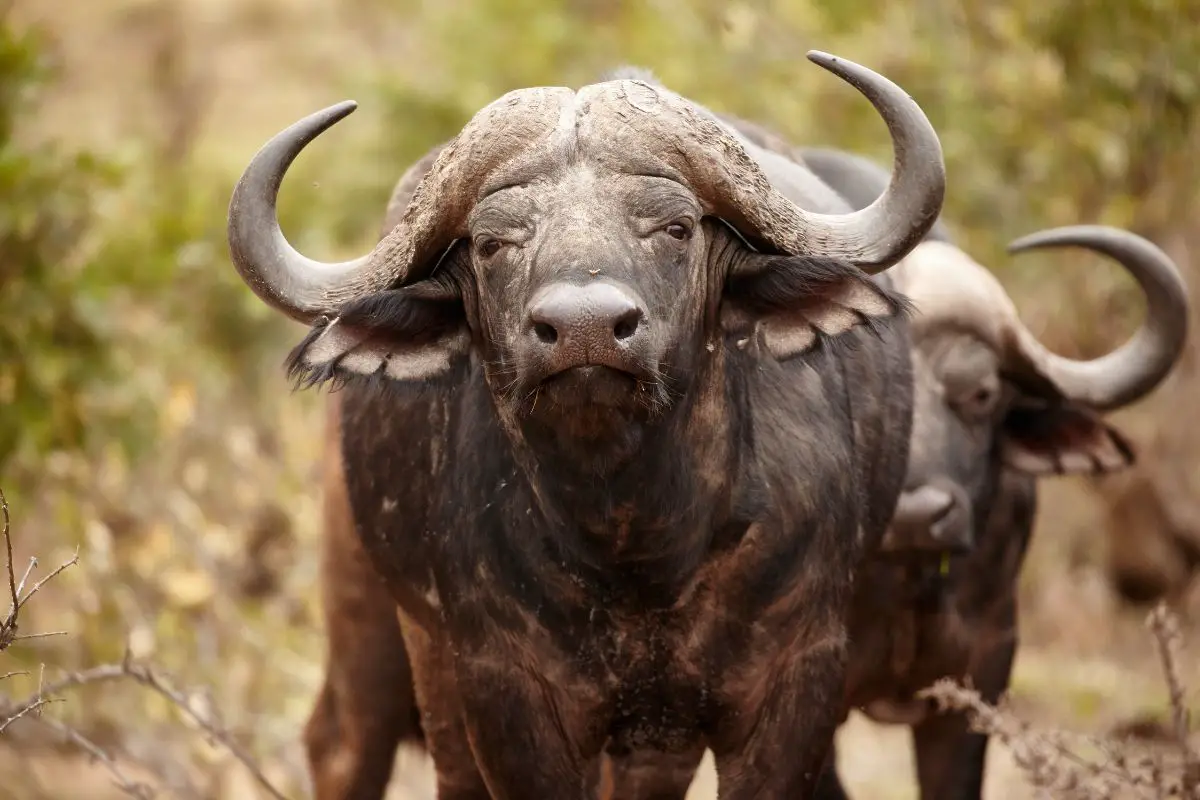
African Buffalo, unlike cows, are never domesticated because they are aggressive animals with extremely unpredictable temperaments. These animals stand between 3.5 and 5.6 feet tall and average between 5.6 and 11.2 feet long. Their weight is between 937 and 1918 pounds.
They don’t have even hooves like cows, but instead, they have front hooves that are wider in the front. This helps them bare the heavier weight they carry in the front. Their calls are more varied than that of cows and they are quieter.
Their coats are dark brown or black and they have horns that come together at the base. Like cows, they live in herds and they eat mainly tall coarse grasses.
4. Bantengs

Bantengs look very much like cows in shape, but they are larger. These inhabitants of Southeast Asia can be anywhere from 6.2 to 12 feet long and weigh anywhere from 1300 to 1800 pounds. They travel in herds of females and juveniles led by one male.
Older bulls rarely travel alone but form their own groups of two to three members for protection. The communications are carried out by roars and bellows, with a high-pitched cry when stressed. Unlike cows, the banteng is easily stressed.
They don’t produce much milk and are more likely to hide when approached. They have a more varied diet than cows. Living in forests, they feed on grasses, shoots, leaves, flowers, and fruit.
5. Gaur
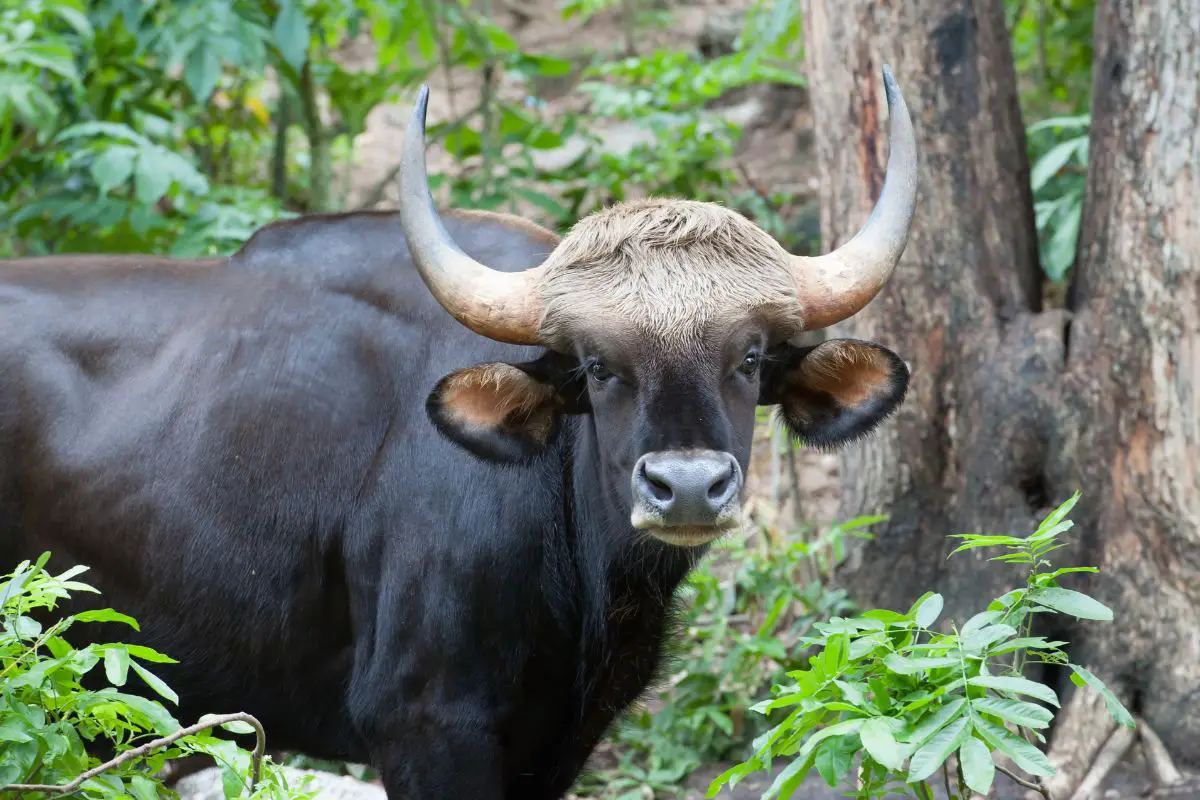
Southeast Asia is home to the largest members of the wild cattle breeds. These massive animals stand 56-87 inches tall and they are 8’2″ to 10’10” long. They can weigh anywhere from 970 to 3307 pounds.
They are largely nocturnal, unlike most other cattle breeds. Their outstanding features are a ridge between their horns that runs down their back. Their horns project backward.
The coats of the gaur are dark brown and they have gray on their foreheads. Their muzzles and lower legs are white. While these animals live in herds like cows, the herds are led by an older female.
They eat grasses and legumes and are much more shy than cows.
6. Yaks
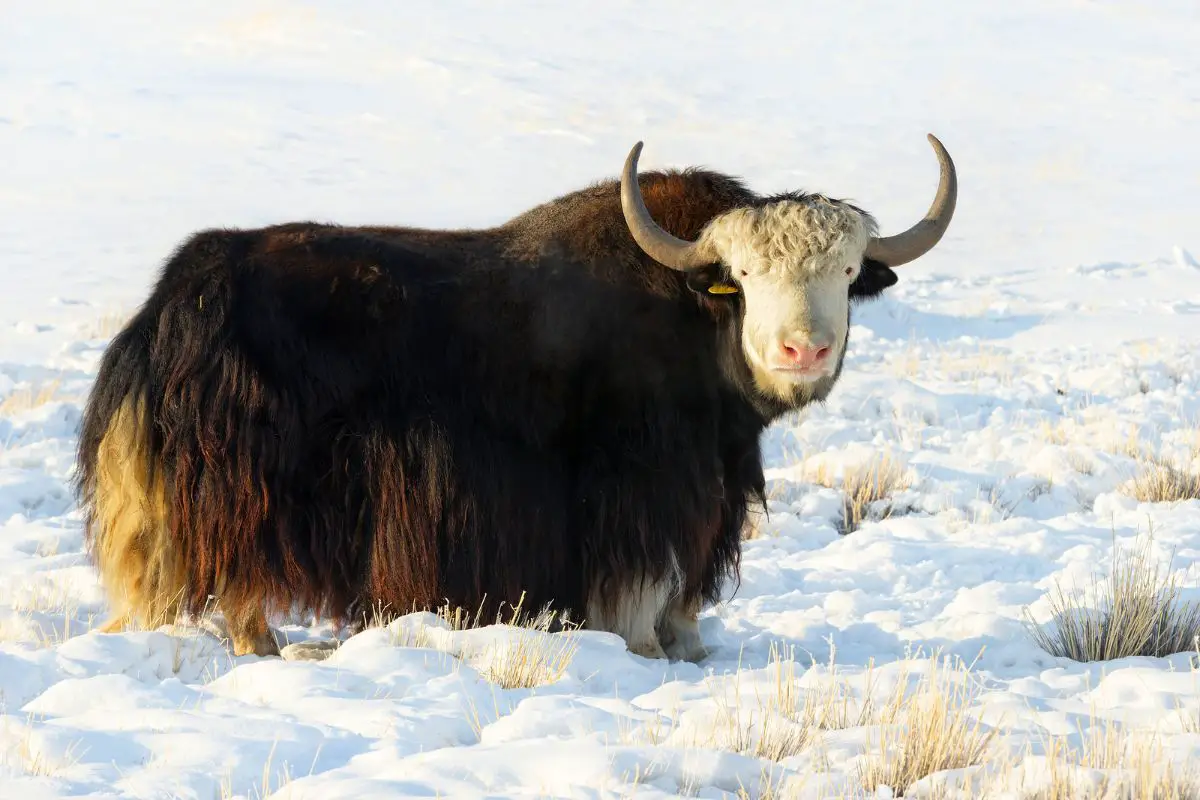
Yaks inhabit the Himalayan Mountain region. Like cows, they are docile and sociable animals that live in herds. They have longer hair than cows which helps them stay warm in the colder mountain regions.
They are heavily built with thick, sturdy legs. Yaks have small ears and broad foreheads like cows. Their horns are smooth and dark in color and grow from the sides of their head, then curve forward.
They have a shoulder hump that is lacking in cows. The yak runs from 496 to 1290 pounds and stands 41-54 inches tall. Its tail is long and resembles that of a horse more so than of a cow.
Communication is accomplished by a series of grunts and squeaks. Like the cow, they graze mainly on grass.
7. Bison
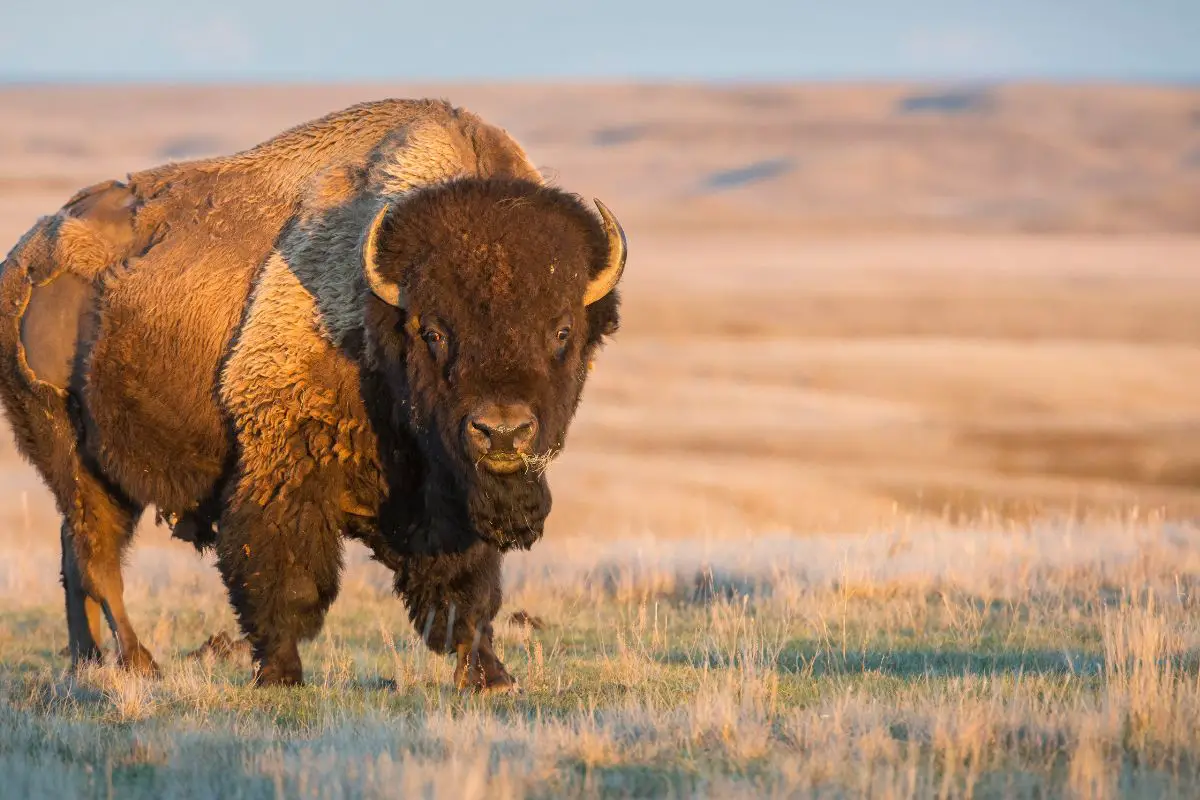
Bison call North America and Europe home. They are often referred to as buffalo but are correctly named bison. Bison sport a shaggy coat and are very muscular.
They are larger than cows. An average bison is 6’7″ tall and 11’6″ long. It weighs anywhere from 880 to 2800 pounds.
These animals are wandering grazers who travel in herds that are gender-specific. They live on a diet of a wide variety of grasses and plants. One of their favorite activities is wallowing in either mud or dirt.
Bison are very rarely found domesticated. They have unpredictable temperaments. One moment, they appear docile and even lazy.
Next, they can be running at a speed of up to 35 MPH and attacking for no apparent reason. Bison once were plentiful, like cows, but reached a point of near extinction. They are slowly repopulating, but the inability to domesticate them makes this a slow process.
8. Goats
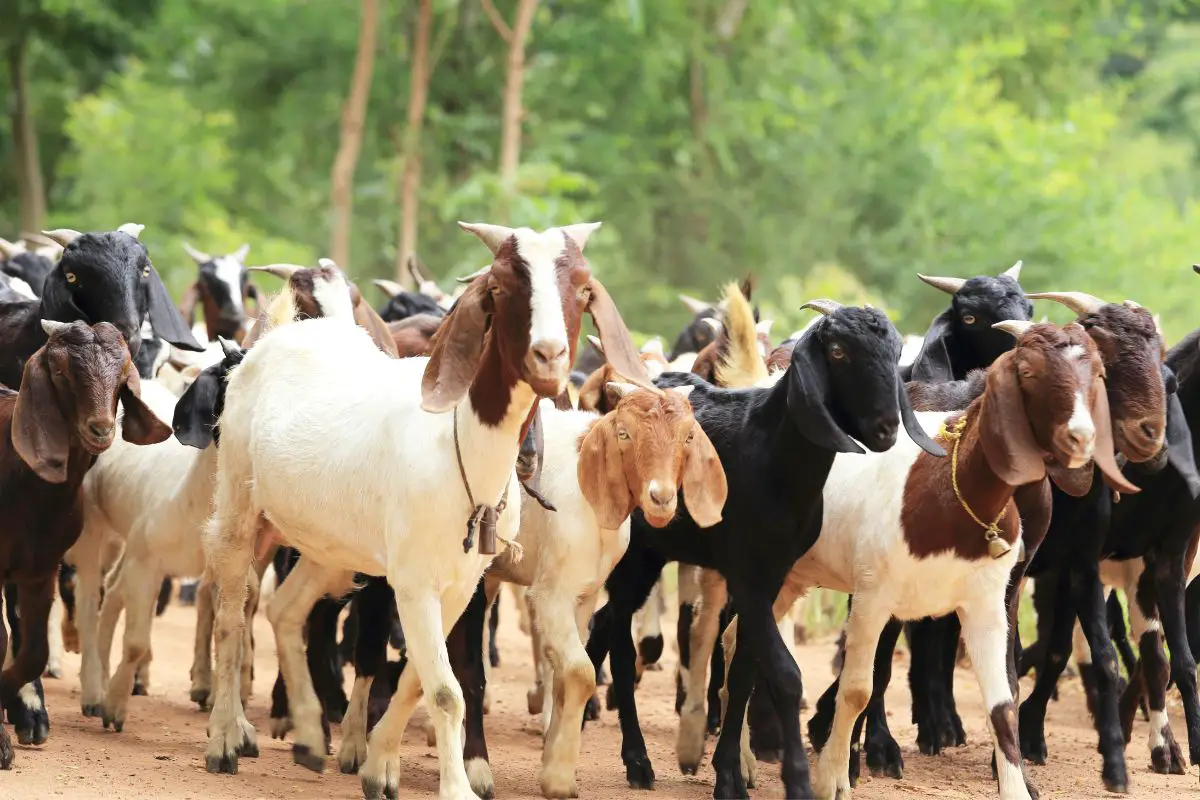
Goats are not related to cows but they share more characteristics with the typical cow than many other animals in the bovine family. Like cows, goats are herd animals. Unlike cows, these herds are led by a female.
They are grazers who eat mainly grass but can live on grain. Goats are horned like cows and their milk is considered even more nutritious than cow milk. The milk is also used to make a sought-after cheese like the cow.
The ancestors of the goat originated in Asia and they are the oldest domesticated animal. Unlike cows, they only have two teats whereas the cow has four. Like cows, they are very social animals and love interacting with people.
They also share the cow’s natural curiosity. One way that they differ from the cow is that they can be temperamental when not in a good mood.
9. Ankole-Watusi
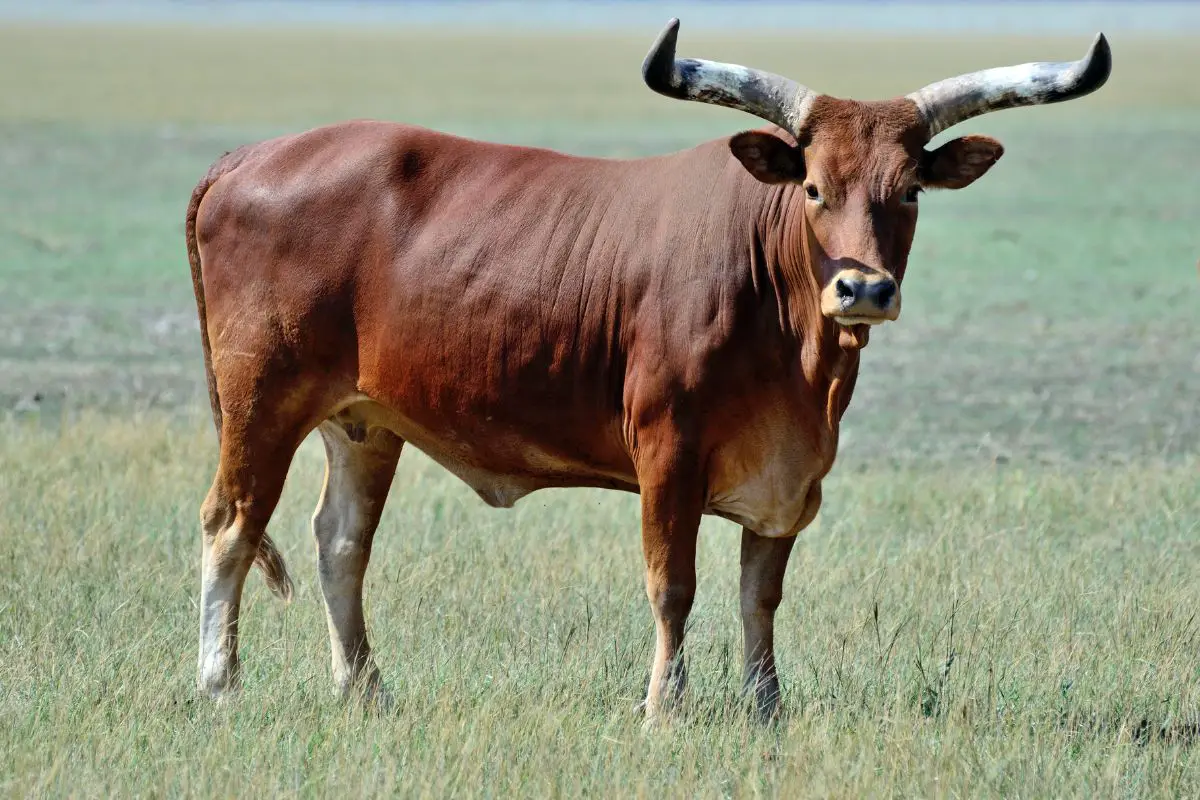
The Ankole-Watusi is native to Central and Eastern Africa. These are herd animals that come in a variety of colors but the majority sport a red coat. They have the largest horns of all cattle breeds and are the only breed that has been sought after mainly for show and not to use for meat or milk.
They were often a status symbol for the wealthy. Thes animals have temperaments similar to cows. They are highly trainable and very docile. They love being around people The diet of the ankole-watusi consists of grass, leaves, and acorns.
They sport lyre-shaped horns.
10. Zebu
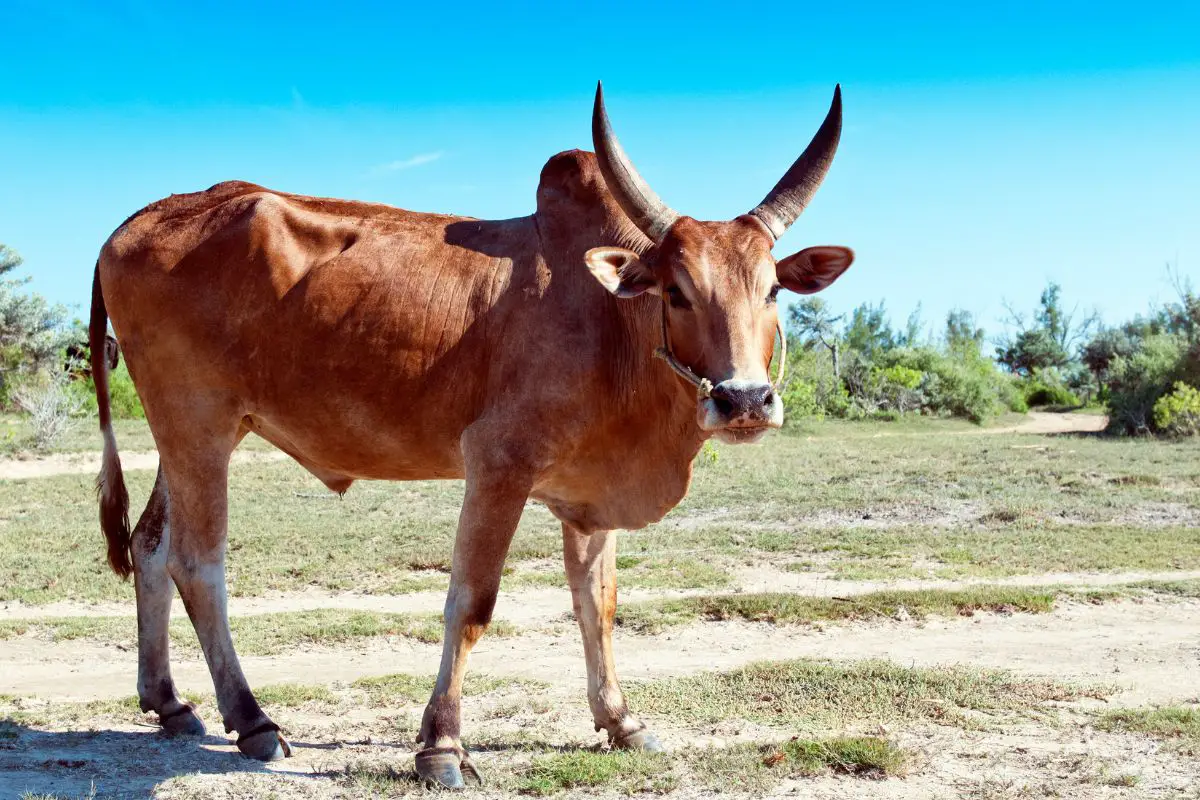
Zebu are found mainly on the Indian subcontinent. They have a fatty lump on their shoulders and large ears that tend to droop. Their bodies are leaner than a cow and their coat consists of short hairs, making it possible for them to withstand the hot, humid temperatures of their environment.
They produce very little milk, unlike the cow but their diet is the same, feeding mainly on grass. They contain some of the smallest of the bovine breeds. The average Zebu stands only 3.5 feet tall and weighs about 600 pounds.
They are herd animals, led by one male but there are few left in the wild. They can be found pulling carts, plows, and other farm equipment. They share the cow’s naturally docile personality.
11. Oxen
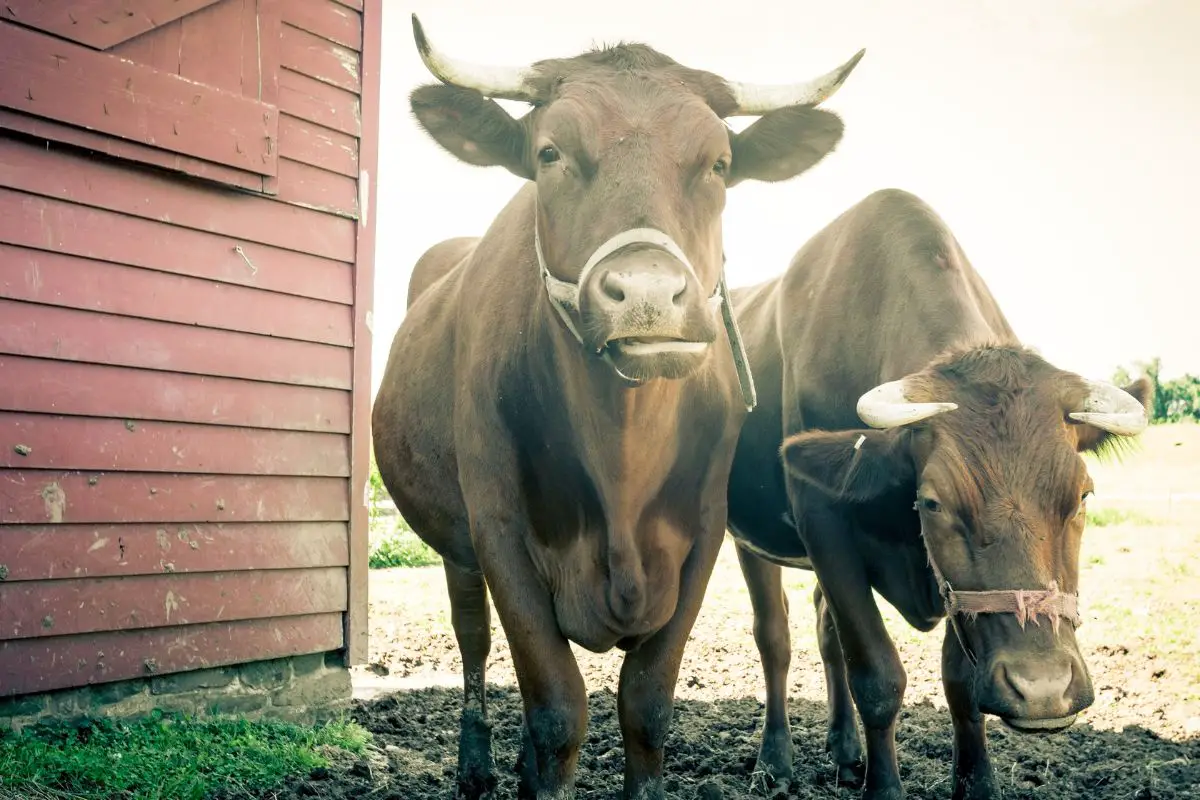
While Oxen aren’t exactly their own breed but instead are bred and trained for the specific purpose of working, they have developed their own characteristics that put them in a category of their own. They are larger than the normal cow and weigh anywhere from 800-4000 pounds. They have a stocky build and thick shoulders and necks that make pulling large loads easier.
You will often find whole teams of oxen on heavier jobs such as pulling logs. These animals need to be shod as they have a tendency to wear down their hooves. They share the cow’s intelligence and can understand human language as well as read body language.
Their docile nature and willingness to keep on going while other animals quit make them excellent as workers. They eat grass and grains like cows.
12. Highland Cow
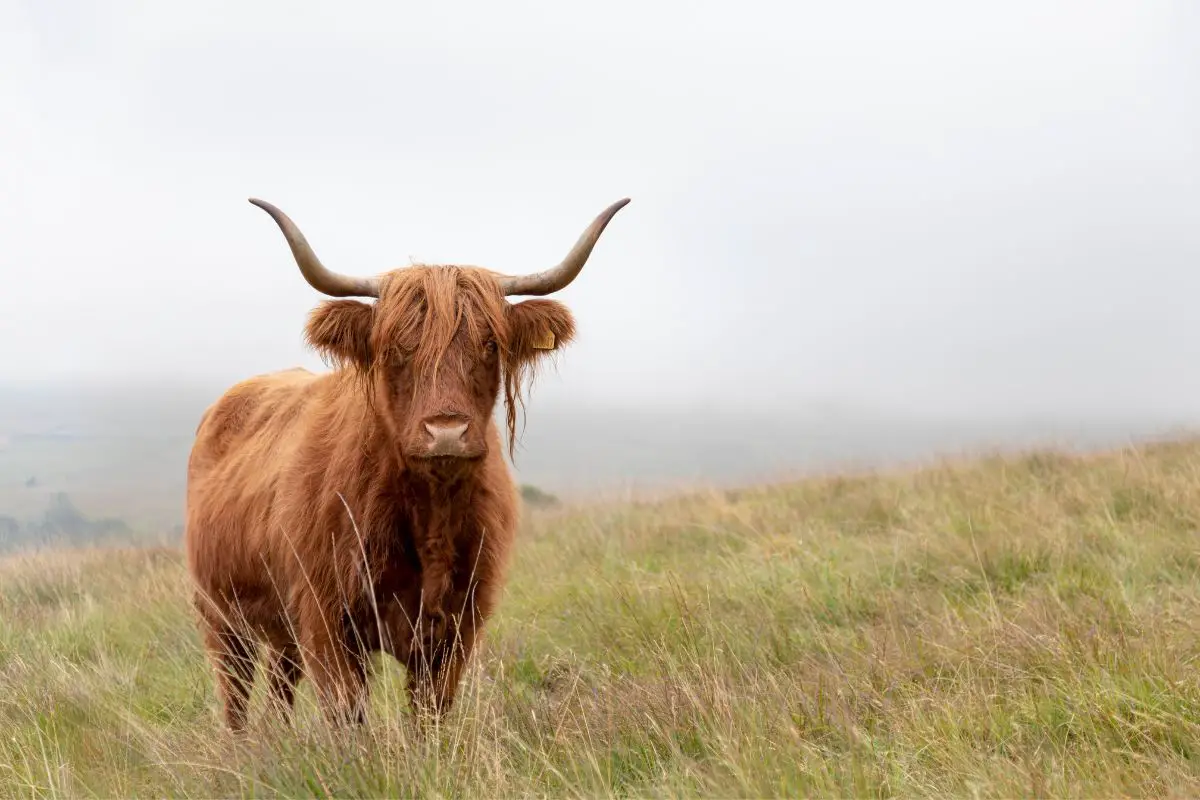
The Highland Cattle of Scotland are larger than cows. They stand 41 to 49 inches tall and weigh between 942 and 1433 pounds. Their coats are long and wavy to help protect them from colder climates.
They are one of the only cattle breeds that have a double-layered coat. Their horns are both long and broad. These animals come in both black and red, but the reddish coats are preferable.
Instead of a herd, their living groups are called folds, but the social structure is the same as a cow. Like a cow, they are even-tempered. While they prefer grass as a food, they are known for eating plants that other bovines avoid.
This is because food is often scarce in their habitat. The horns on the male and female grow differently. On the male, the horns grow forward. On the females, horns grow upward.
13. Anoas
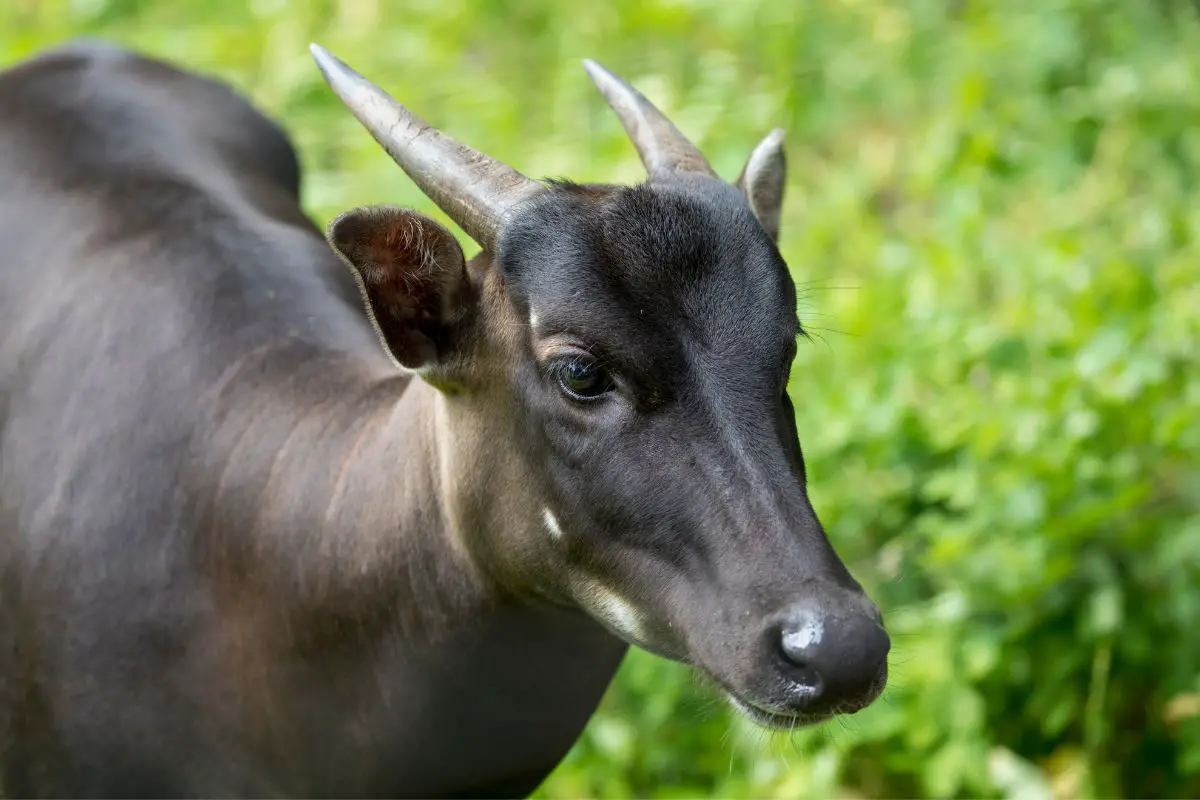
Anoas look like miniature water buffalo. They inhabit the rainforests in Indonesia and can be found near water. One of their favorite activities is wallowing in mud or water.
Their horns are thin and grow straight upward. These animals are about 35 inches tall and 70 inches long and weigh between 330 and 660 pounds. They have short hair, like cows, and are a dark brown color.
Their diet consists of aquatic plants, ferns, fruit, palms, and ginger. Unlike cows, these animals prefer living alone or in pairs. They are also unlike cows in that they are known for their aggression and the fact that they will attack rather than run when confronted.
14. Kouprey
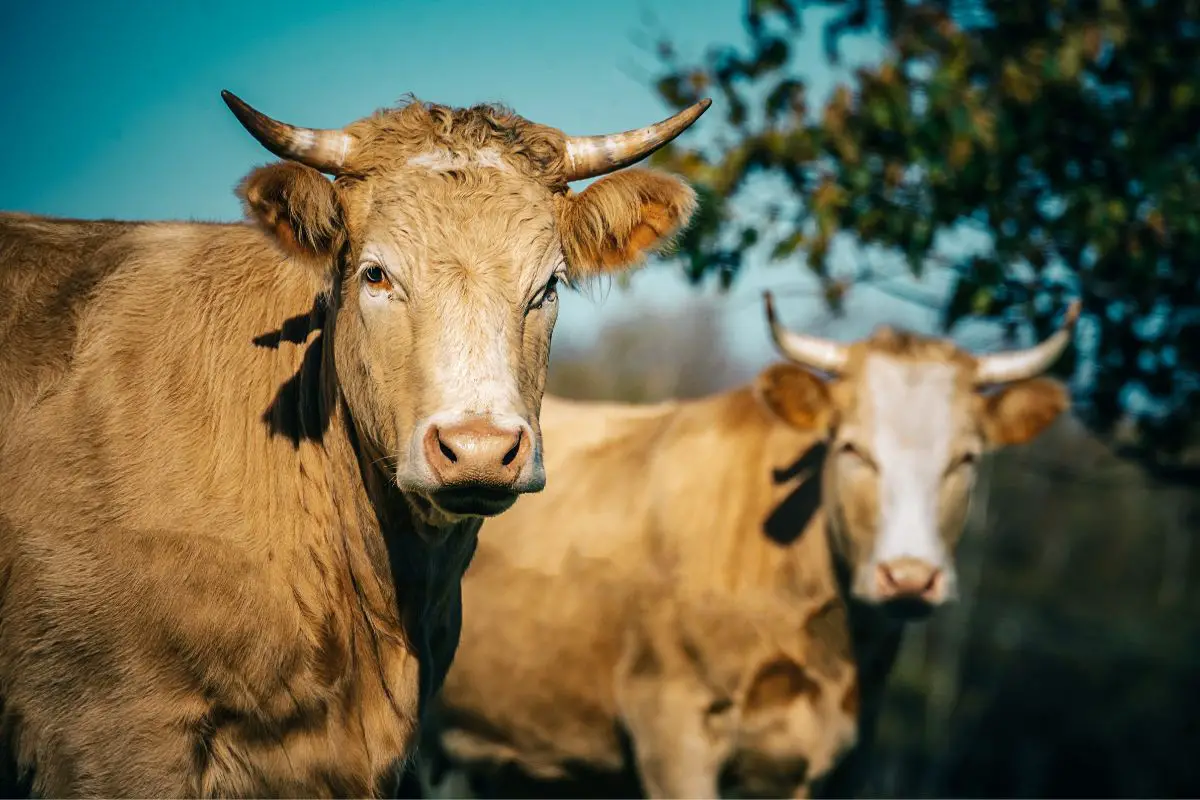
These are among the rarest of bovine animals and it was once thought that they were extinct, but they do exist in Indochina. They are like cows in that they prefer to dine on grass. They also travel in herds, but unlike a cow, their herds are led by a single female.
These animals are shy and prefer to avoid people. The Kouprey is dark brown or black and has a tall, narrow body with long legs and a humped back. Their horns resemble those of an antelope rather than a cow, with a spiral shape.
They stand an average of 78 inches tall and weigh in at 1984 pounds. Little is known about how they communicate.
15. Tamaraw
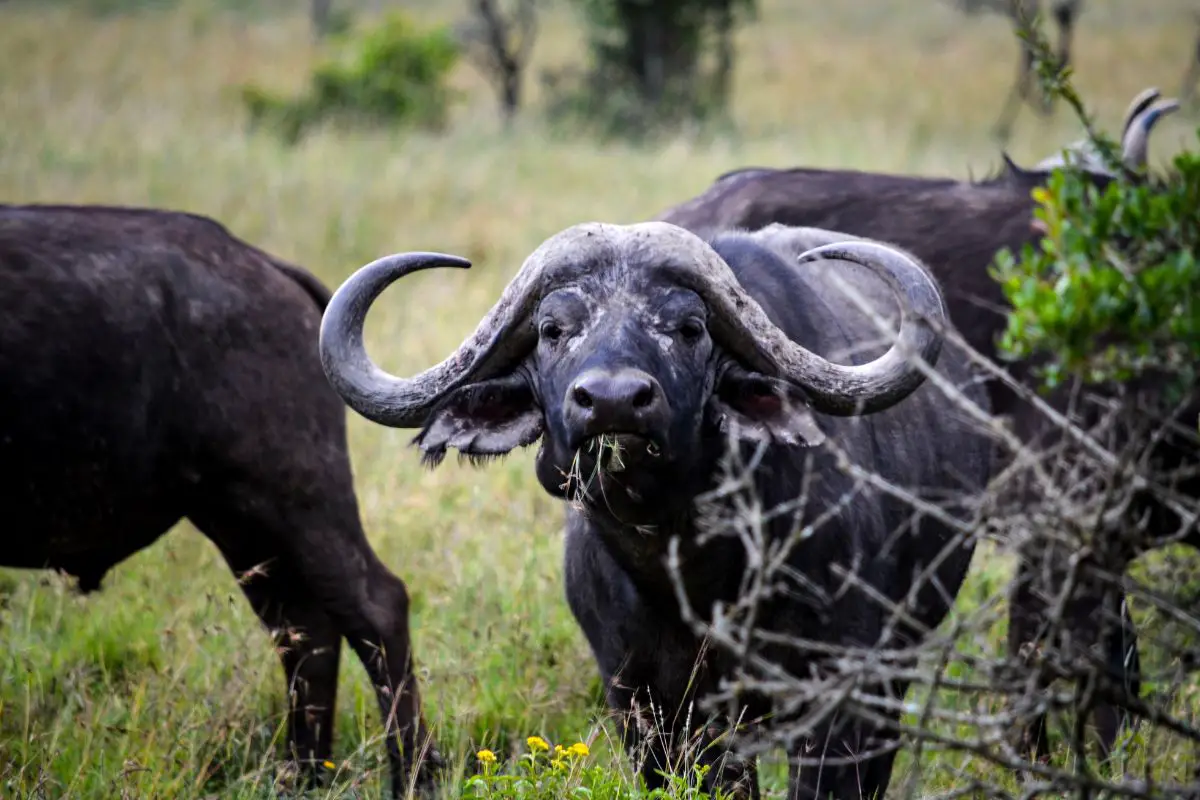
Tamaraws are part of the bovine family but may be the most unlike the cow. They share the same four-compartment stomach and shorter horns, but that is about all they share with the cow. They are about seven feet long and 450-500 pounds.
This animal is found only in the Philippines. Tamaraws tend to be solitary creatures and have been known to become aggressive if cornered. They use their short, v-shaped horns as their first line of defense.
Their fur is fine and dark brown in color and their diet is varied and consists of grass, bamboo, and wild sugarcane. These animals also enjoy wallowing.
People Want to Know
Who first started milking cows?
People have been drinking the milk from cows long before our bodies could handle it. There is evidence that people in what is now modern Kenya and Sudan drank milk-based products at least 6000 years ago. Nobody knows who exactly considered it a good idea.
Where did cows originate?
Aurochs are the ancestors of today’s cows. These animals were first domesticated in what is now Turkey and Pakistan approximately 10,000 years ago. As these animals were twice the size of modern cows, it is believed the first herd started with a mere 80 Aurochs that were bred for the qualities that were considered most favorable.
Why do cows moo?
Cows are very social animals and love to communicate. Each cow has its own “voice” and they can recognize each other. Different moos have different meanings and they can express a variety of emotions and needs such as hunger, pleasure, pain, and lonliness.
